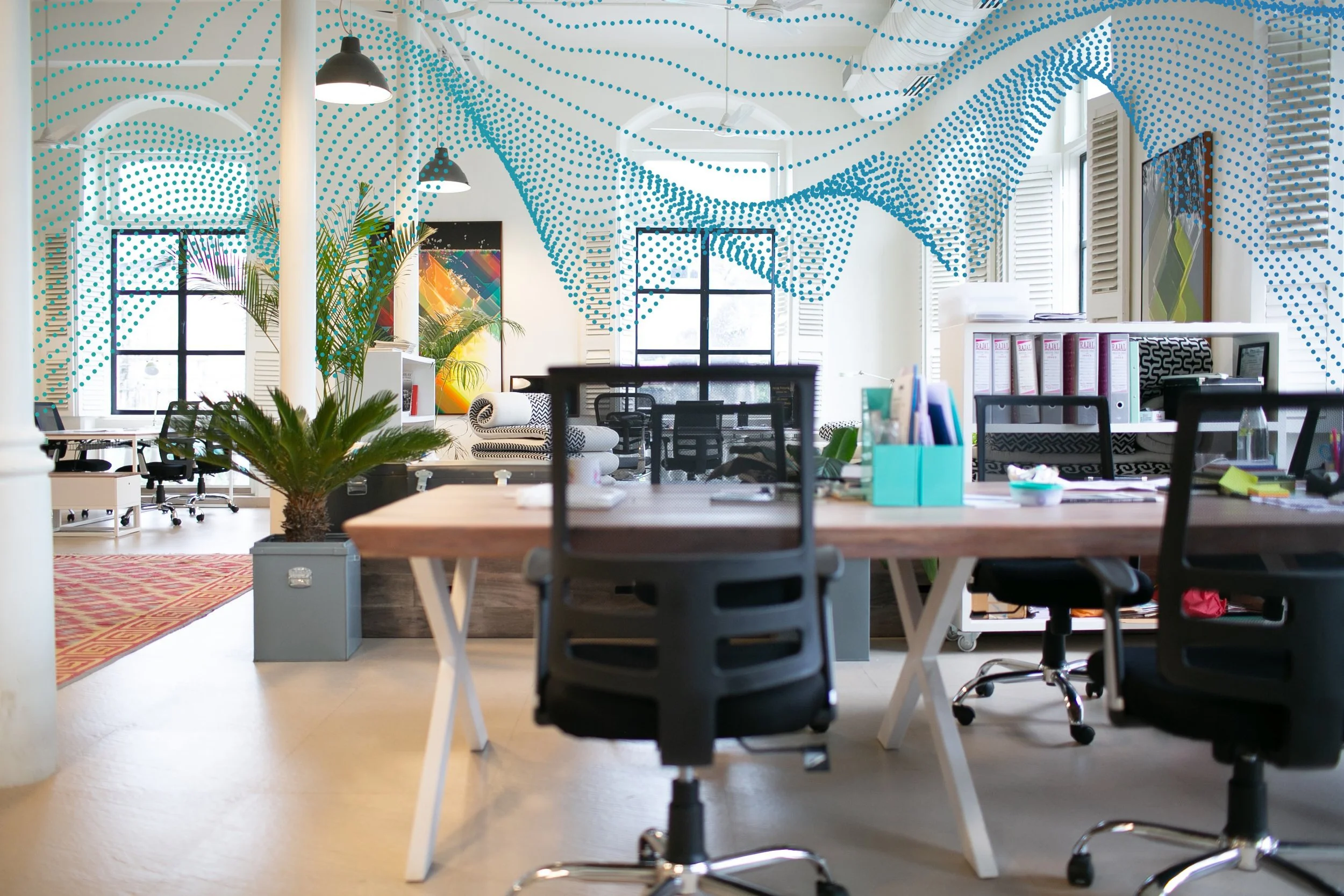Biophilic Design - For Your Ears
Advertisement
Introduction
Good design starts with people, and we humans have an innate yearning for nature. For many years, designers have taken inspiration from the great outdoors to create restorative indoor spaces that reconnect us to the natural world.
But there's one sense that tends to be neglected in biophilic design. Sound is arguably the most important way that we connect with nature and yet it’s often just a side-note in the conversation.
The sounds of birds chirping or singing can help us relax, and put us in a more natural setting.
The Power of Sound
As humans evolved, our ears helped us make sense of natural environments. Unlike sight, sound gives us a 360-degree picture of our surroundings. Because of evolutionary experiences, it became the sense that our brains react most quickly to.
If a twig snaps behind you in a quiet forest, your body prepares for fight or flight before you’ve even had a chance to consciously process what’s happening. Your heart rate and breathing speed up. Cortisol rushes through your body as your eyes widen and you spin around. Back in the day, our responses to sound were often the difference between life and death.
As well as alerting us to potential threats, elements in the natural soundscape tell us whether a space is restorative, serene or nourishing. Rhythmic crashing waves, gently trickling freshwater streams or happily chirping birds all tend to relax our bodies and brains because we associate them with safety, resources and comfort.
As social creatures, our survival also depended on communicating with one another. Humans learned to pick up on the tiniest details in speech to understand meaning and create emotional connections with other people. Imagine the many subtle meanings the sound “ahh” might have depending on how it’s said ––it can communicate relief, fear, compassion, disapproval, surprise...
Sound affects us powerfully. It changes our moods and emotions, how we process information, and the rhythms and functioning of our bodies.
The Sound of the Modern World
Fast forward to modern day. Despite the fact that we evolved for survival in nature, most of us live in urban environments and spend the vast majority of our time indoors. It’s a strange mismatch. We’re still hard-wired to respond to noises that come out of nowhere, whether they’re quiet or loud. But instead of a snapping twig, it’s more likely to be our co-worker's digital notifications that startle us and steal our attention. In the modern world we’re bombarded by sounds which have little use or relevance to us but which constantly trigger stress responses.
Our uncanny ability to pick up on speech still comes in useful, but it also causes immense frustration in modern buildings. Imagine trying to concentrate in an open office space while someone else’s conversation is within earshot, even when it’s at a whisper. For many of us, doing so is nearly impossible.
We haven’t forgotten how to respond in a more positive way to sound, it’s just that most modern buildings aren’t designed for the ears. Our ears are always on, trying to make sense of the spaces we inhabit. We try to heal in hospitals where we can’t sleep, learn in schools where we're overwhelmed by noise, or focus in offices plagued by distraction.
Biophilic Soundscapes
People respond powerfully to sound. Sound in the built environment is something that we cannot afford to ignore or leave to chance. Soundscapes can take biophilic design to another level, creating more immersive, restorative, and functional buildings than ever before. Soundscapes can also create indoor experiences that are intelligent, accessible and scalable.
The benefits of positive natural soundscapes are evidence-based. They’ve been explored in hundreds of peer-reviewed studies. Research shows that carefully designed nature-based soundscapes help us recover quicker, sleep better, feel safer, relax deeper and focus better. So how can we bring these benefits indoors?
Over the last few years, soundscaping technology has improved hugely. We’re no longer limited in how we approach soundscaping in buildings. Soundscaping solutions can now create indoor experiences that are intelligent, accessible and scalable, in all types of buildings.
Historically, the conversation about sound indoors has typically focussed around volume; reduce the volume here, eliminate noise there. But this can result in spaces that are uncomfortably quiet and, counterintuitively, less productive or healthy. With the technology and knowledge we now have at our disposal, the potential for better sound is so much more expansive, particularly if we draw on the principles of biophilic design.
There are many parallels between soundscaping and other areas of biophilic design. Let’s take just a few principles from Terrapin Bright Green’s 14 Patterns of Biophilic design, which has become a key reference for the biophilic design industry.
We evolved for survival in nature. Soundscapes can transport people to natural environments where we feel and work at our best. Research shows that water sounds can improve restoration, creativity, relaxation and focus at work.
Connections with Natural Systems
Natural sound is ever-changing. Circadian sound can trigger our body’s circadian rhythms, just like natural light. Or on a longer term, soundscaping can mirror the changes of the natural world over the seasons.Refuge
Some natural sounds, like birdsong, can increase our perceptions of comfort and safety. Others have natural masking characteristics, which create more private spaces with fewer distractions.Presence of Water
The natural world gives us a huge palette of water sounds, from gently lapping lake waves to downpours of rain. Each has measured benefits and research shows that water sounds can improve restoration, creativity and relaxation. It's also been shown to be the ultimate sound for focus –– even better than silence!
Conclusion
My company, Moodsonic, brings these ideas to life for some of the world’s largest and most innovative organizations. Some of our clients are looking for greater flexibility indoors. In North America, Elevance Health needed to overhaul their workplace strategy in response to the pandemic. Moodsonic’s soundscaping was deployed throughout one of their multistorey buildings. Prior to the pandemic, plans for the building had prioritized focused work, but when Elevance moved to a hybrid model, collaboration and flexibility took center stage. Despite the big strategic changes, more varied soundscaping with an emphasis on ideation were seamlessly introduced. They supported people’s needs and distinguished the new functions of each area.
Other clients want to heighten people’s connections to local place and culture. Each day, employees in one of our client’s Australian headquarters are taken on a sonic journey around a small nearby island. They move along the island’s beautiful beaches and through lakes, swamps and shrublands with unique flora and fauna. The journey is designed around people's daily schedules too. Calming soundscapes de-stress at the busiest times of day and refreshing sound counters the post-lunch lull, using algorithmically generated soundscaping that never repeats, loops or becomes repetitive. In other buildings around the world, we’ve transported people to English meadows, Polish forests, Californian beaches and Japanese gardens.
People respond powerfully to sound, and sound in the built environment is something that we cannot afford to ignore or leave to chance. Soundscaping can take biophilic design to another level, creating more immersive, restorative, and functional buildings than ever before.
Advertisement
Evan Benway, CEO, Moodsonic
Evan works to advance the soundscape state of the art. He advises the International Well Building Institute on the WELL Building Standard’s Sound concept, and he is an active contributor to research on sound and cognition. Past research includes longitudinal office sound scaping studies, studies of neurodiverse responses to soundscapes, and physiological responses to sound. He is a frequent contributor to podcasts and industry journals, and a speaker at events and conferences related to sound, wellbeing in the built environment, and biophilic design.
Evan is an avid technologist with over a dozen patents to his name. Prior to founding Moodsonic he led product and innovation teams for a Fortune 500 technology company in California.







